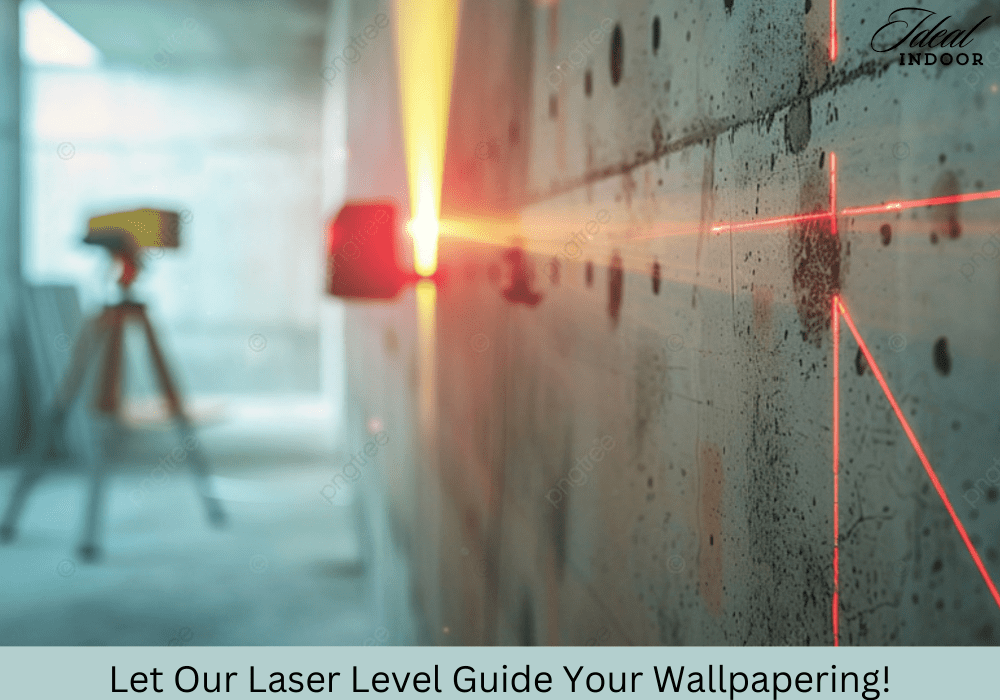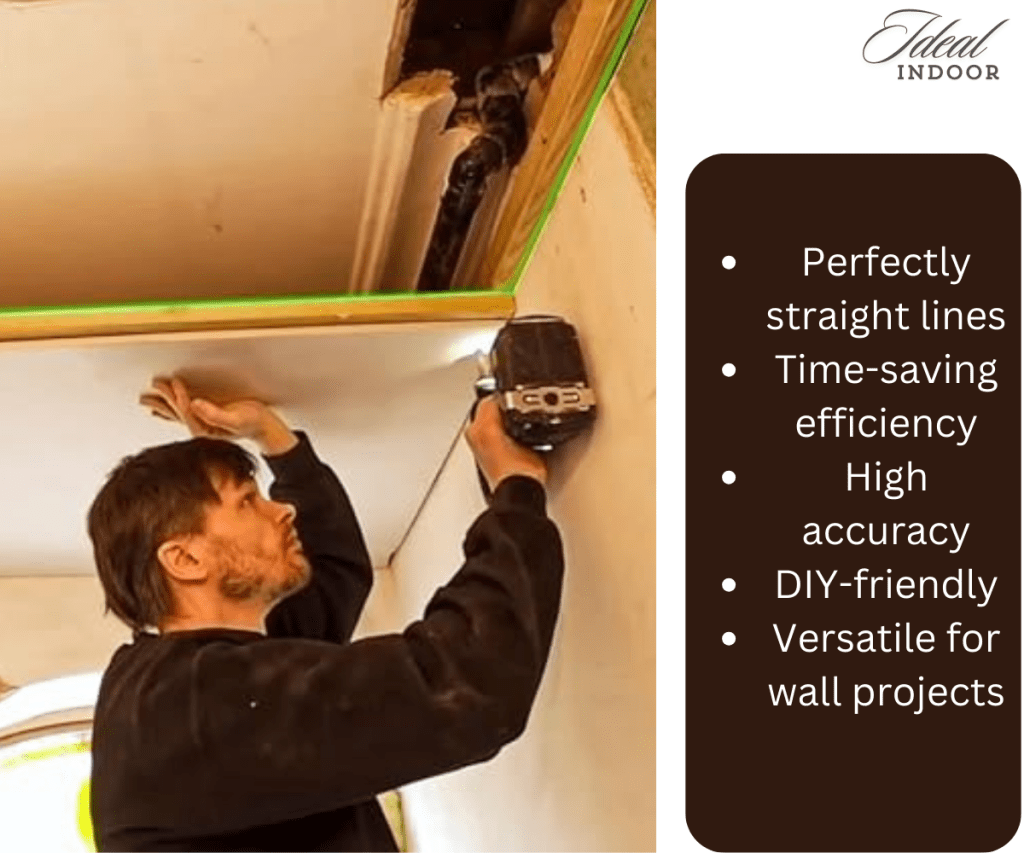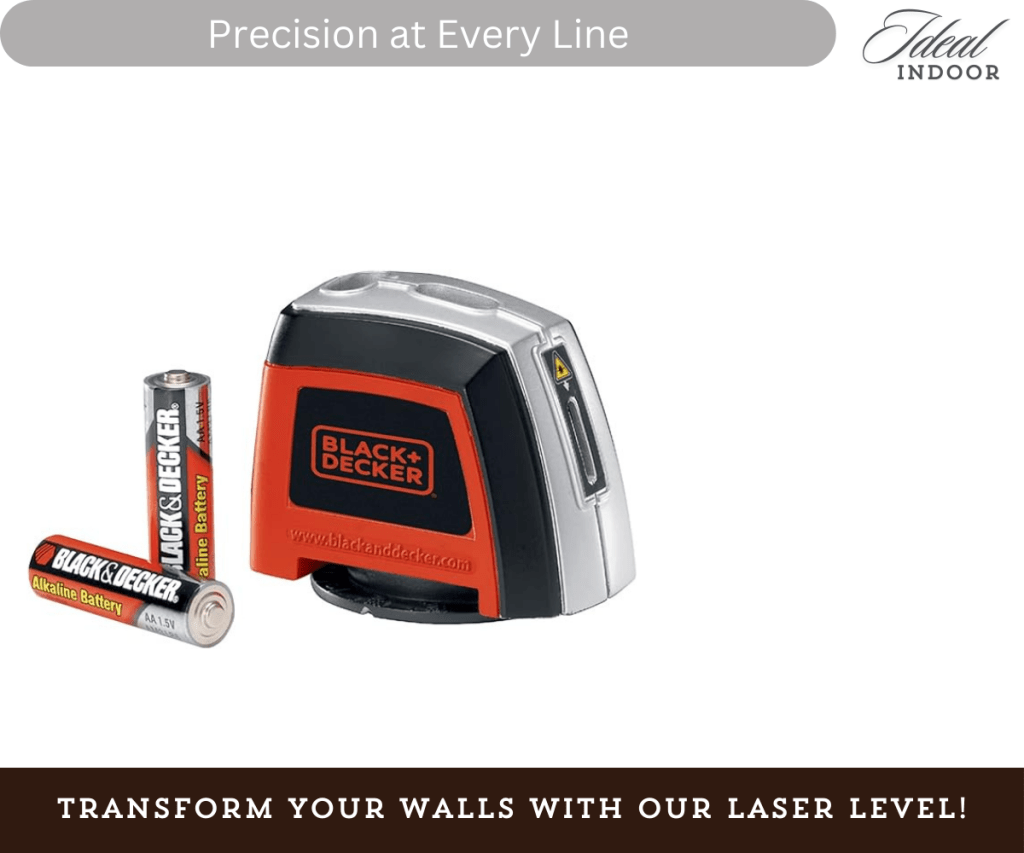Wallpapering can be a daunting task, but with the right tools, it becomes a breeze. One essential tool that can significantly ease the process is a laser level. Whether you’re a DIY enthusiast or a professional decorator, a laser level ensures precision and saves time. In this article, we’ll explore why a laser level is indispensable for wallpapering, how to use it effectively, and which models stand out as the best in the market.

Understanding Laser Levels
Before diving into the best laser levels for wallpapering, it’s important to understand what a laser level is and how it functions. Essentially, a laser level is a tool that projects a laser beam to create a perfectly straight reference line or plane. This line serves as a guide, ensuring your wallpaper is applied evenly and without any unsightly tilts.
Types of Laser Levels
There are several types of laser levels, each suited for different tasks:
- Line Laser Levels: These project a single horizontal or vertical line.
- Cross Line Laser Levels: These emit both horizontal and vertical lines simultaneously, forming a cross.
- Rotary Laser Levels: These rotate 360 degrees, projecting a level line around an entire room.
Understanding these types helps you choose the right laser level for your wallpapering needs.

Why Use a Laser Level for Wallpapering?
Using a laser level for wallpapering not only ensures straight lines but also saves time and reduces errors. Traditional methods like chalk lines or plumb bobs are cumbersome and less accurate. A laser level simplifies the process by providing a clear, continuous line that you can follow effortlessly.
Benefits of Using a Laser Level
- Accuracy and Precision: Laser levels deliver unparalleled accuracy, ensuring your wallpaper aligns perfectly.
- Time-Saving: With a laser level, you can set up quickly and get straight to wallpapering.
- Ease of Use: Most laser levels are user-friendly, making them accessible to both novices and professionals.
In contrast, traditional methods are prone to errors and require constant adjustments, making the laser level a clear winner.
How to Use a Laser Level for Wallpapering
Setting up and using a laser level for wallpapering is straightforward if you follow these steps:
- Setting Up the Laser Level: Place the laser level on a stable surface or mount it on a tripod. Ensure it’s positioned where it can project a line across the area you’ll be working on.
- Aligning the Wallpaper: Adjust the laser level until the projected line is perfectly level. This line will serve as your guide for aligning the wallpaper.
- Maintaining Straight Lines: As you apply the wallpaper, constantly check the alignment with the laser line to ensure consistency.
- Tips for Optimal Use: Keep the laser level steady, and use it in a low-light environment for better visibility. Regularly check its alignment during your work.
- Common Mistakes to Avoid: Avoid placing the laser level on uneven surfaces, and ensure it’s securely mounted to prevent shifts.
Top Features to Look for in a Laser Level for Wallpapering
When choosing a laser level for wallpapering, certain features can make a significant difference in performance.
- Accuracy and Range: Look for models with high accuracy and a sufficient range to cover your working area.
- Self-Leveling Capability: Self-leveling lasers automatically adjust to ensure the projected line is perfectly level, even if the tool itself is slightly tilted.
- Battery Life and Power Options: Opt for a laser level with long battery life or versatile power options to avoid interruptions.
- Visibility of Laser Lines: Bright laser lines are easier to see, especially in well-lit environments.
- Mounting Options and Accessories: A tripod or wall mount can enhance stability and ease of use.
- Durability and Build Quality: A robust build ensures your laser level withstands the rigors of frequent use.
Best Laser Levels for Wallpapering
After extensive research and testing, I have compiled a list of the best laser levels for wallpapering available on the market.
Bosch GLL 55 Self-Leveling Cross-Line Laser Level
The Bosch GLL 55 is a reliable choice for both beginners and professionals. It projects bright horizontal and vertical lines, making it perfect for wallpapering.
Features and Specifications:
- Self-leveling within 4 degrees
- Range of up to 50 feet
- Easy-to-use interface
Pros:
- High accuracy
- Durable construction
Cons:
- Slightly higher price point
DEWALT DW088K Cross Line Laser Level
DEWALT’s DW088K is another excellent option, known for its robust build and reliable performance.
Features and Specifications:
- Self-leveling within 4 degrees
- Range of up to 100 feet
- Magnetic base for easy mounting
Pros:
- Long range
- Durable and sturdy
Cons:
- Slightly bulky
Huepar 901CG Self-Leveling Cross-Line Laser Level
Huepar’s 901CG offers impressive features at a budget-friendly price.
Features and Specifications:
- 360-degree horizontal line
- Green laser for better visibility
- Self-leveling within 4 degrees
Pros:
- Affordable
- Highly visible green laser
Cons:
- Shorter battery life
Tavool T02 Self Leveling Laser Level
Tavool’s T02 is user-friendly and offers great value for money.
Features and Specifications:
- Self-leveling within 4 degrees
- Range of up to 50 feet
- Compact and lightweight design
Pros:
- Easy to use
- Affordable
Cons:
- Limited range
Johnson Level & Tool 40-0921
Johnson’s 40-0921 is known for its durability and reliable performance.
Features and Specifications:
- Self-leveling within 6 degrees
- Range of up to 100 feet
- Durable housing
Pros:
- High durability
- Long range
Cons:
- Heavier than other models

My Experience with Laser Levels for Wallpapering
Having tried several laser levels, I have found that the right tool can make a world of difference in wallpapering. Each model has its strengths, but overall, they all contributed to a smoother, more precise application process.
Personal Anecdotes and Experiences
When I first started wallpapering, I struggled with crooked lines and mismatched patterns. After investing in a laser level, my projects became much more manageable. The Bosch GLL 55, for instance, was a lifesaver in my living room, where I had to align intricate patterns. Similarly, the DEWALT DW088K’s long range was perfect for my hallway, allowing me to cover large sections without constantly repositioning the tool.
Tips for Maintaining Your Laser Level
To ensure your laser level remains accurate and functional, proper maintenance is crucial.
- Cleaning and Storage: Keep the lens clean and store the tool in its case to prevent dust and damage.
- Calibration and Adjustments: Regularly check and calibrate your laser level to maintain accuracy.
- Battery Care and Replacement: Use quality batteries and replace them as needed to ensure consistent performance.
- Troubleshooting Common Issues: If the laser level stops working correctly, refer to the manual for troubleshooting tips or contact customer support.
Final Thought
A good laser level is an invaluable tool for wallpapering, offering precision, efficiency, and ease of use. By investing in a quality laser level, you can transform your wallpapering projects from a frustrating chore into a streamlined, enjoyable process. Remember to choose a model that fits your specific needs and budget, and don’t forget to maintain it properly to ensure long-lasting performance.
Additional Resources
For further information on wallpapering and using laser levels, here are some additional resources:
- Instructional Videos: Many manufacturers offer helpful videos on how to use their laser levels.
- Recommended Reading Materials: Books and articles on DIY home improvement projects.
- Other Useful Tools and Accessories: Consider investing in additional tools like wallpaper smoothers, adhesive applicators, and cutting tools to further enhance your wallpapering experience.